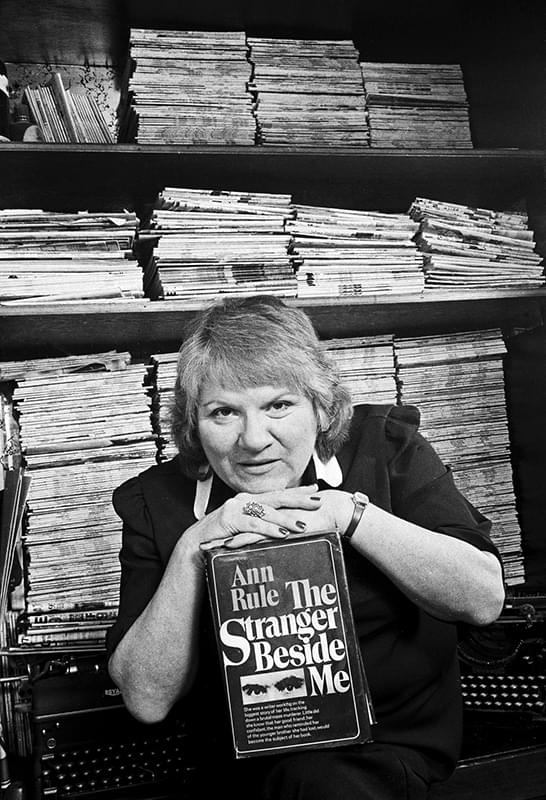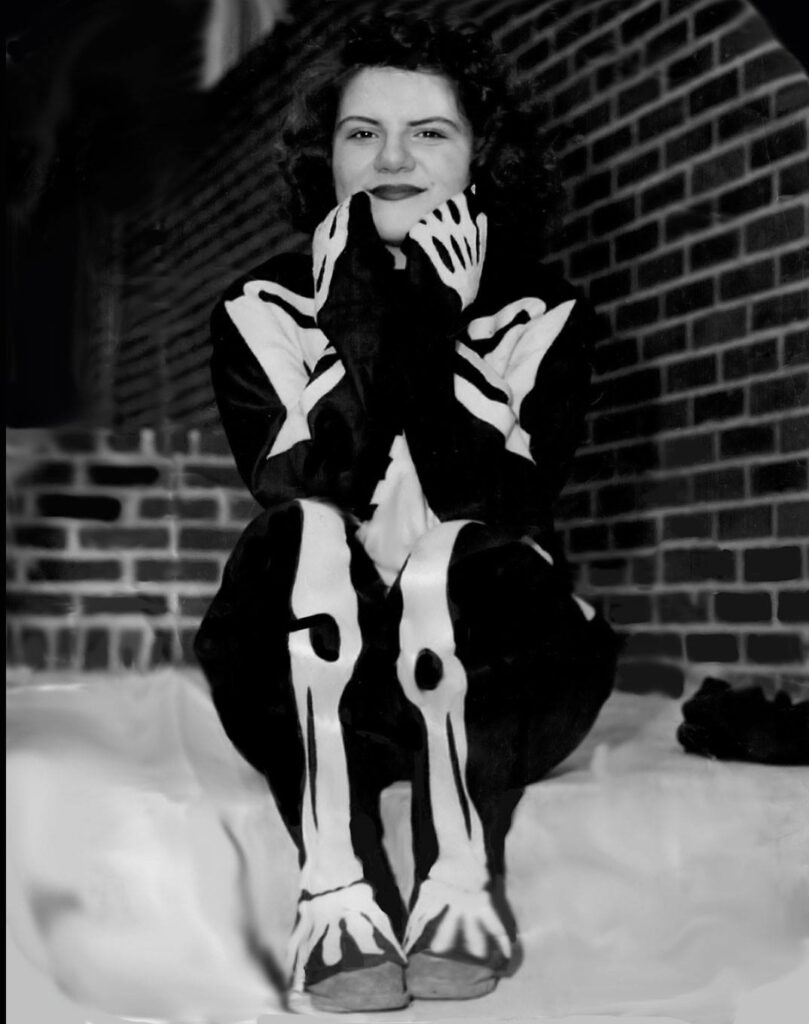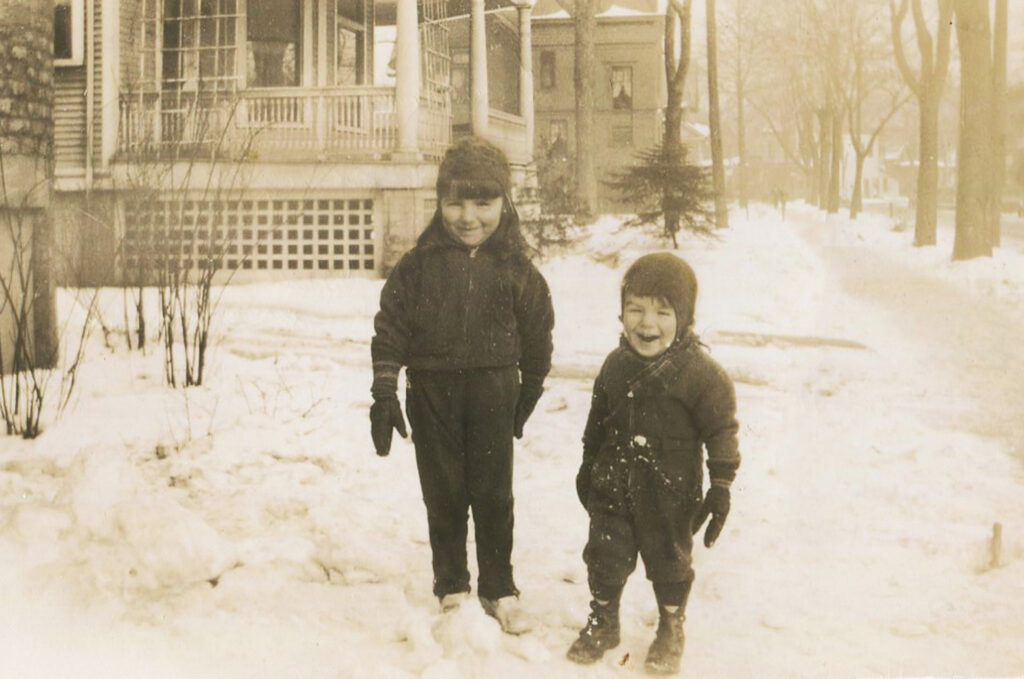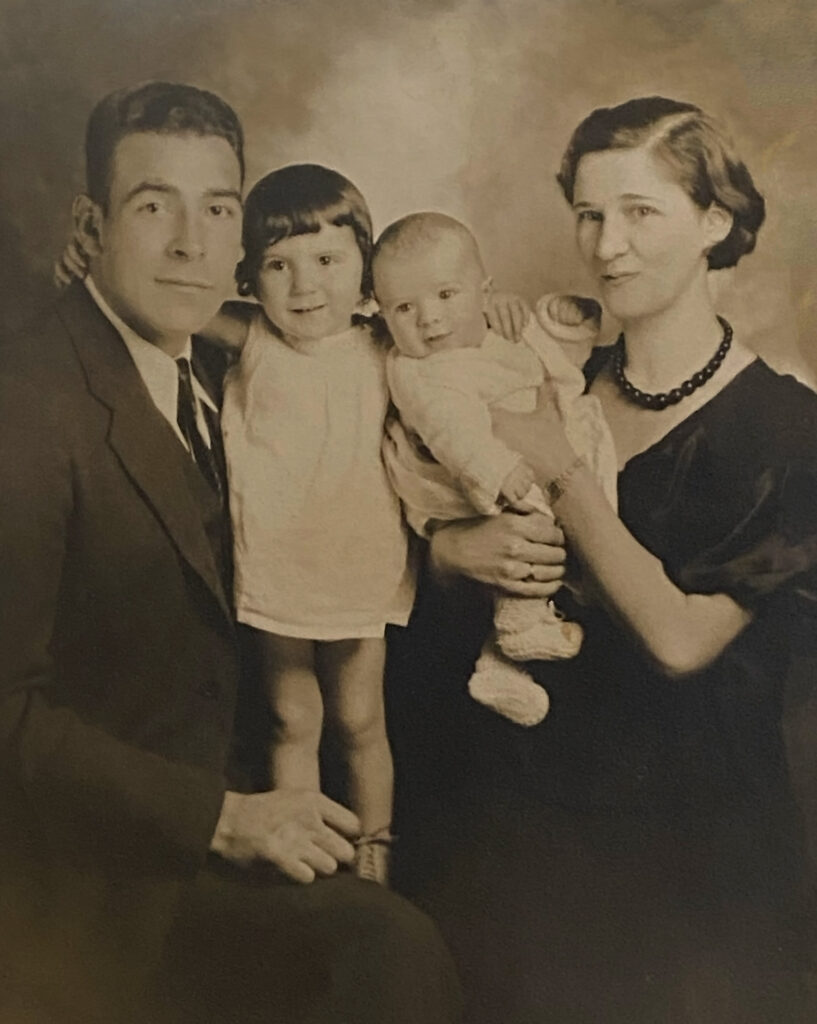About
Ann Rule

Ann Rule was born Ann Stackhouse in Lowell, Michigan in 1931. Her family background had a distinctive blend of psychology, pathology, and criminology. Her mother was a teacher specialising in developmentally disabled children, and her grandfather and one uncle were both sheriffs. Another uncle was a medical examiner, and she had a cousin who was a Prosecuting Attorney. While her father was not a crime-fighter, he was the first person in Michigan to desegregate football matches, bringing black and white teams together to play. Justice, then, was in Ann Rule’s blood.
As a child, Rule spent many summers with her grandparents in Stanton, Michigan. There, she would help her grandmother prepare meals for the prisoners in her grandfather’s jail. As she passed the meals through the grate, she used to wonder why such friendly, apparently normal men were locked behind bars, and why the sweet woman in the cell upstairs – who kindly taught her to crochet – was about to go on trial for murder.
“I wanted to know why some kids grew up to be criminals and why other people didn’t. That is still the main thrust behind my books: I want to know why these things happen, and so do my readers,”
– Interview with Seattle Times, 2004
A lifelong fascination with criminology would start in that jail and mark every stage of her life thereafter. Once she graduated from Coatesville High School in Chester County, Pennsylvania, Rule studied creative writing at the University of Washington, minoring in abnormal psychology. This combination of subject matter would later become a hallmark of Rule’s writing, while Washington would become Rule’s adoptive home and the setting for most of her books.

At 21, Rule became a police officer in the Seattle police department. However, severe near-sightedness made it impossible for her to carry on this career, and her marriage to Bill Rule (a teacher and technical writer), saw her primary role shift from crimefighter to mother-of-four.
It was not until 1969 that Rule would re-enter the worlds of criminology and creative writing again. In her late thirties, Rule started out doing door-to-door surveys before writing about motherhood and home economics for various US women’s magazines. Before long she started publishing in crime magazines such as True Crime and True Detective under the male pen name ‘Andy Stack’ as her male editors thought that no one would believe a woman could know anything about police investigations.
In 1972, Ann and Bill divorced, but by this time, Ann was making a living as a writer, and supported her family by writing 8-10 articles each month for detective magazines, earning approximately $200 per story and $12 for each photograph. From her basement, surrounded by her young family playing and running around, Rule would write with unbreakable focus on a mechanical typewriter. She was tireless and meticulous in her pursuit of making a living as a writer, honing her skills with each grisly case.
“I wrote in our basement, which used to be a garage; it was our rec room too. The kids would be fighting and watching TV while I wrote. The only time I couldn't write was when they fought on top of the typewriter. It took years before they connected my typing to their eating – they didn't realize it was my job!”
— Mothers Who Write: Ann Rule
By 1980, Rule had covered over 800 cases as a ‘fact-detective’ correspondent, principally in homicide along the Northwestern coast. But it was fate, rather than her already successful career in journalism, that would conspire to present Rule with the perfect subject for her first book: Ted Bundy.
Despite Rule’s busy schedule, she always found time to volunteer twice a week at a suicide hotline. Her only sibling sadly died by suicide at the age of twenty, and suicide prevention was a cause close to Rule’s heart. At The Seattle Crisis Clinic, Rule found herself partnered with Ted Bundy. 15 years her junior, Bundy would subsequently be revealed to be one of America’s most notorious and prolific serial killers, responsible for the kidnap, rape and murder of at least thirty women and girls in the 1970s. In 1971, Rule and the would-be killer became good friends, fast. In Rule’s own words, “rapport, almost instant rapport, made us friends.” During that time, Rule found nothing disturbing in Bundy’s behavior, and described him as “brilliant, handsome.” Between them they cultivated a “curious bond.”
In 1974, when working on a book investigating the killer behind a string of disturbing attacks on women in the Pacific Northwest, Rule had a pit in her stomach. Bundy resembled a composite picture of the suspect so closely, that she gave his name to detectives investigating the case. What began as a simple exercise in reportage turned into an exhaustive inward journey through Rule’s own beliefs around Bundy—a friend whom she truly valued. Readers follow her on a path that sees the true horror of Bundy’s expertly concealed monstrousness reveal itself to Rule, as she discovered more detail about the case. This process provides an emphatic sub-plot to the already gripping and horrifying tale of Bundy’s various murders, escape attempts, and media charm offensive. The result is a definitive account of Bundy and his crimes in The Stranger Beside Me, published in 1980, almost ten years after they first met. But it is also a book that, in the process of reading it, reveals Bundy’s ability to fool even the most savvy and analytical of minds.
Despite Rule’s troubled, complex relationship with both the book and its subject, it made her an overnight success, and remained on The New York Times Bestseller list for thirty consecutive weeks in its first year. What followed was a string of successful true crime books that saw Rule taking an increasingly central role in the stories she told. Most famously, Rule’s research into the Green River Killer saw her aiding the Green River Task Force by passing tips along from her readers. Much later in her life, Rule’s successful attempt to help a mother prove her daughter’s death in 1998 was a murder, formed the basis for her 2010 book In the Still of the Night.

By the time of her death in 2015, Rule had earned the accolade of ‘The Queen of True Crime’. During her long career, she reflectively shared her insecurities and concerns about the way she made her living: “I thought: ‘Oh my God, I’m making a living from somebody else’s tragedy. Can I do this?'”
Seeking counsel, Rule turned to a psychiatrist, who told her that many people — including police officers, morticians and lawyers — face the same ethical dilemma. The therapist emphasized that what mattered were her feelings toward the victims. “I really care about the people I’m writing about … I finally came to the knowledge I’m doing what I probably was meant to do in life.” Rule’s books are an exercise in resetting the imbalance between victims and killers, furnishing the stories with a great amount of detail around the victims’ lives. Finally, she realized that writing these stories was more than a vocation: it was a calling.
"I want to warn potential victims. Many of them are women, and many of them are battered women. It's a cause for me. When I look back, though, so many of the books I've written are about wives who just couldn't get away. But I've heard from probably a dozen or more women who've said, ‘I'd be dead if it wasn't for something I read in one of your books.'’"
- Interview by Edward Morris, 2001
Amidst a renaissance of true crime content, Rule is remembered as the true crime writer whose accounts stood out in their genre for their purpose and humanity, focused as much on the identity and anguish of the victims and their families, as on the depravity of the killers. In a modern era where true crime dramas are coming under scrutiny for frolicking in the evil of terrible murderers, Ann Rule’s integrity and empathy provide a viable route through murky waters.
“When The Stranger Beside Me was published in 1980, I often accompanied my mother to TV and radio stations where interviewers grilled her about Ted […] Audiences were mesmerized by Ann’s soft and lilting voice as she explained that handsome men do kill and rape was not an act of passion but an act of violence. This was a new concept to many, and the most important thing that Ann Rule taught her readers. It was lifesaving information.”
—Leslie Rule, ‘Afterword’, The Stranger Beside Me






